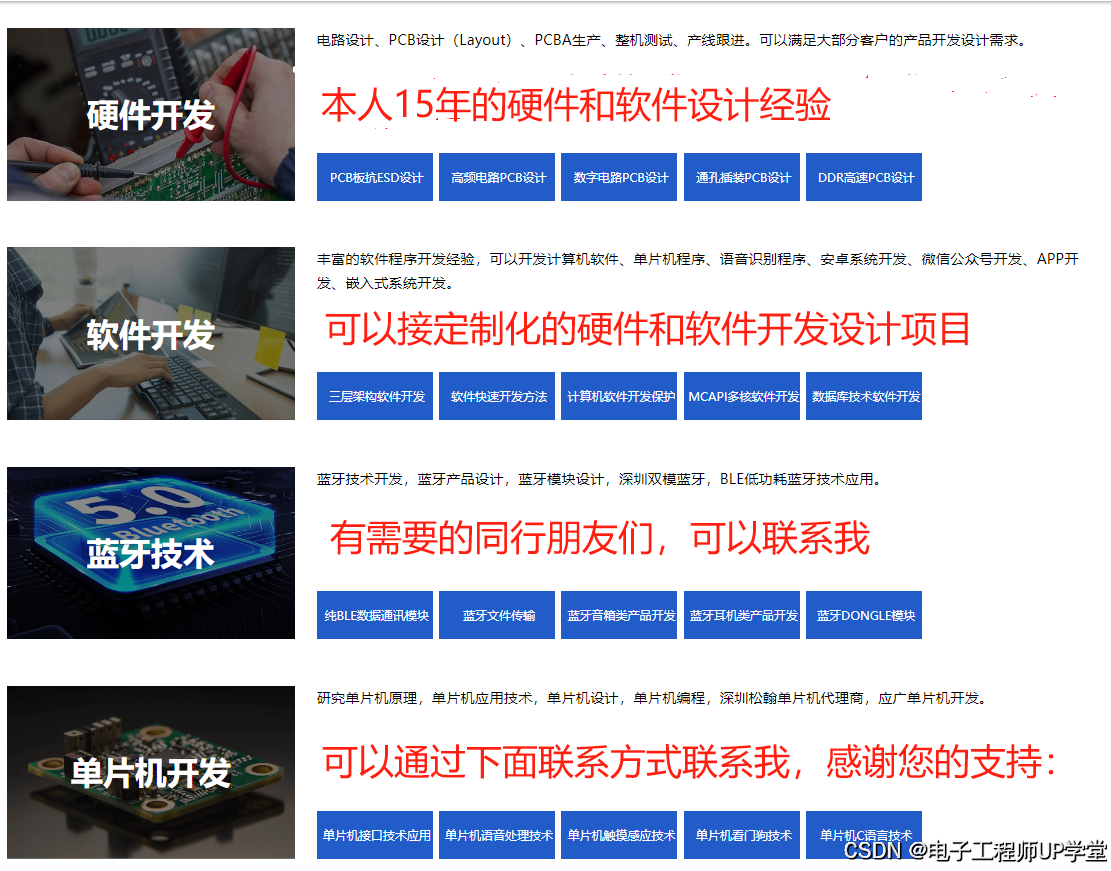工作池(Worker Pool)实战实现
一、知识要点概述
| 模块 | 核心功能 | 实现难点 | 重要程度 |
|---|---|---|---|
| 池化设计 | 管理协程生命周期 | 并发安全、资源控制 | ⭐⭐⭐⭐⭐ |
| 动态扩缩容 | 根据负载调整池大小 | 平滑扩缩、性能优化 | ⭐⭐⭐⭐ |
| 任务分发 | 合理分配任务到worker | 负载均衡、任务优先级 | ⭐⭐⭐⭐⭐ |
| 状态监控 | 监控池的运行状态 | 指标收集、可观测性 | ⭐⭐⭐⭐ |
让我们先创建一个完整的工作池实现:
package main
import (
"context"
"fmt"
"log"
"sync"
"sync/atomic"
"time"
)
// Task 表示一个任务
type Task struct {
ID int
Priority int // 任务优先级
Handler func() error // 任务处理函数
Done chan error // 任务完成通知通道
}
// WorkerPool 表示一个工作池
type WorkerPool struct {
maxWorkers int32 // 最大worker数量
minWorkers int32 // 最小worker数量
currentWorkers int32 // 当前worker数量
taskQueue chan *Task // 任务队列
stopCh chan struct{} // 停止信号
workerWg sync.WaitGroup // worker等待组
metrics *Metrics // 指标收集
ctx context.Context // 上下文
cancel context.CancelFunc // 取消函数
}
// Metrics 用于收集指标
type Metrics struct {
totalTasks int64 // 总任务数
completedTasks int64 // 完成任务数
failedTasks int64 // 失败任务数
processingTasks int32 // 正在处理的任务数
queueLength int32 // 队列长度
}
// NewWorkerPool 创建新的工作池
func NewWorkerPool(minWorkers, maxWorkers int, queueSize int) *WorkerPool {
ctx, cancel := context.WithCancel(context.Background())
wp := &WorkerPool{
maxWorkers: int32(maxWorkers),
minWorkers: int32(minWorkers),
currentWorkers: 0,
taskQueue: make(chan *Task, queueSize),
stopCh: make(chan struct{}),
metrics: &Metrics{
totalTasks: 0,
completedTasks: 0,
failedTasks: 0,
processingTasks: 0,
queueLength: 0,
},
ctx: ctx,
cancel: cancel,
}
// 启动最小数量的worker
for i := 0; i < minWorkers; i++ {
wp.addWorker()
}
// 启动自动扩缩容
go wp.autoScale()
// 启动指标收集
go wp.collectMetrics()
return wp
}
// addWorker 添加一个worker
func (wp *WorkerPool) addWorker() {
atomic.AddInt32(&wp.currentWorkers, 1)
wp.workerWg.Add(1)
go func() {
defer wp.workerWg.Done()
defer atomic.AddInt32(&wp.currentWorkers, -1)
for {
select {
case task := <-wp.taskQueue:
if task == nil {
return
}
// 更新指标
atomic.AddInt32(&wp.metrics.processingTasks, 1)
// 执行任务
err := task.Handler()
// 更新指标
atomic.AddInt32(&wp.metrics.processingTasks, -1)
if err != nil {
atomic.AddInt64(&wp.metrics.failedTasks, 1)
} else {
atomic.AddInt64(&wp.metrics.completedTasks, 1)
}
// 通知任务完成
if task.Done != nil {
task.Done <- err
close(task.Done)
}
case <-wp.ctx.Done():
return
}
}
}()
}
// Submit 提交任务
func (wp *WorkerPool) Submit(task *Task) error {
select {
case <-wp.ctx.Done():
return fmt.Errorf("worker pool is stopped")
case wp.taskQueue <- task:
atomic.AddInt64(&wp.metrics.totalTasks, 1)
atomic.AddInt32(&wp.metrics.queueLength, 1)
return nil
}
}
// Stop 停止工作池
func (wp *WorkerPool) Stop() {
wp.cancel()
close(wp.taskQueue)
wp.workerWg.Wait()
}
// autoScale 自动扩缩容
func (wp *WorkerPool) autoScale() {
ticker := time.NewTicker(time.Second)
defer ticker.Stop()
for {
select {
case <-ticker.C:
queueLen := atomic.LoadInt32(&wp.metrics.queueLength)
currentWorkers := atomic.LoadInt32(&wp.currentWorkers)
processingTasks := atomic.LoadInt32(&wp.metrics.processingTasks)
// 根据队列长度和处理中的任务数决定是否需要扩容或缩容
if queueLen > 0 && currentWorkers < wp.maxWorkers &&
float64(processingTasks)/float64(currentWorkers) > 0.8 {
// 扩容
wp.addWorker()
} else if queueLen == 0 && currentWorkers > wp.minWorkers &&
float64(processingTasks)/float64(currentWorkers) < 0.2 {
// 缩容
atomic.AddInt32(&wp.currentWorkers, -1)
}
case <-wp.ctx.Done():
return
}
}
}
// collectMetrics 收集指标
func (wp *WorkerPool) collectMetrics() {
ticker := time.NewTicker(5 * time.Second)
defer ticker.Stop()
for {
select {
case <-ticker.C:
log.Printf("Worker Pool Metrics:\n"+
"Total Tasks: %d\n"+
"Completed Tasks: %d\n"+
"Failed Tasks: %d\n"+
"Processing Tasks: %d\n"+
"Queue Length: %d\n"+
"Current Workers: %d\n",
atomic.LoadInt64(&wp.metrics.totalTasks),
atomic.LoadInt64(&wp.metrics.completedTasks),
atomic.LoadInt64(&wp.metrics.failedTasks),
atomic.LoadInt32(&wp.metrics.processingTasks),
atomic.LoadInt32(&wp.metrics.queueLength),
atomic.LoadInt32(&wp.currentWorkers))
case <-wp.ctx.Done():
return
}
}
}
func main() {
// 创建工作池
pool := NewWorkerPool(2, 10, 100)
// 模拟提交任务
for i := 0; i < 20; i++ {
taskID := i
task := &Task{
ID: taskID,
Handler: func() error {
// 模拟任务处理
time.Sleep(time.Second)
log.Printf("Task %d completed\n", taskID)
return nil
},
Done: make(chan error, 1),
}
if err := pool.Submit(task); err != nil {
log.Printf("Failed to submit task %d: %v\n", taskID, err)
continue
}
// 异步等待任务完成
go func() {
if err := <-task.Done; err != nil {
log.Printf("Task %d failed: %v\n", taskID, err)
}
}()
}
// 运行一段时间后停止
time.Sleep(10 * time.Second)
pool.Stop()
}
让我们看一下工作池的工作流程图:

二、核心功能详解
1. 池化设计
工作池的核心设计包括以下几个方面:
-
Worker生命周期管理
- 创建:通过addWorker方法动态创建
- 销毁:通过context取消信号控制
- 状态维护:使用atomic保证并发安全
-
任务队列管理
- 使用带缓冲channel作为任务队列
- 支持任务优先级
- 处理队列满/空的情况
-
并发安全
- 使用atomic操作保证计数器安全
- 使用WaitGroup管理worker数量
- 使用context控制生命周期
2. 动态扩缩容
扩缩容策略包括:
- 扩容条件
if queueLen > 0 && currentWorkers < wp.maxWorkers &&
float64(processingTasks)/float64(currentWorkers) > 0.8 {
wp.addWorker()
}
- 缩容条件
if queueLen == 0 && currentWorkers > wp.minWorkers &&
float64(processingTasks)/float64(currentWorkers) < 0.2 {
atomic.AddInt32(&wp.currentWorkers, -1)
}
- 平滑处理
- 通过定时器控制扩缩容频率
- 保持最小worker数量
- 限制最大worker数量
3. 任务分发
任务分发机制包括:
- 任务提交
func (wp *WorkerPool) Submit(task *Task) error {
select {
case <-wp.ctx.Done():
return fmt.Errorf("worker pool is stopped")
case wp.taskQueue <- task:
atomic.AddInt64(&wp.metrics.totalTasks, 1)
return nil
}
}
- 任务处理
- worker从队列获取任务
- 执行任务处理函数
- 通知任务完成状态
- 负载均衡
- 任务自动分配给空闲worker
- 支持任务优先级
- 避免单个worker过载
4. 状态监控
监控功能包括:
- 指标收集
- 总任务数
- 完成任务数
- 失败任务数
- 处理中任务数
- 队列长度
- 当前worker数量
- 指标报告
log.Printf("Worker Pool Metrics:\n"+
"Total Tasks: %d\n"+
"Completed Tasks: %d\n"+
"Failed Tasks: %d\n"+
"Processing Tasks: %d\n"+
"Queue Length: %d\n"+
"Current Workers: %d\n",
...
- 性能监控
- worker使用率
- 任务处理延迟
- 队列等待时间
三、使用建议
- 配置选择
- minWorkers:根据基础负载设置
- maxWorkers:考虑系统资源上限
- queueSize:权衡内存使用和任务积压
- 错误处理
- 实现任务重试机制
- 记录错误日志
- 设置任务超时
- 性能优化
- 适当的队列大小
- 合理的扩缩容阈值
- 避免任务处理时间过长
- 监控告警
- 设置关键指标告警
- 监控worker数量变化
- 关注任务处理延迟
四、实战示例
Worker Pool 使用示例的代码:
package main
import (
"fmt"
"log"
"math/rand"
"time"
)
// 模拟HTTP请求处理任务
type HTTPRequest struct {
path string
duration time.Duration
}
// 模拟HTTP请求处理器
func simulateHTTPHandler(req HTTPRequest) error {
time.Sleep(req.duration)
if rand.Float32() < 0.1 { // 10%的失败率
return fmt.Errorf("failed to process request: %s", req.path)
}
return nil
}
func main() {
// 创建工作池
pool := NewWorkerPool(5, 20, 1000)
// 创建一些模拟的HTTP请求
paths := []string{
"/api/users",
"/api/products",
"/api/orders",
"/api/payments",
"/api/inventory",
}
// 启动请求生成器
go func() {
for i := 0; i < 100; i++ {
// 随机选择一个路径
path := paths[rand.Intn(len(paths))]
// 创建请求任务
req := HTTPRequest{
path: path,
duration: time.Duration(100+rand.Intn(900)) * time.Millisecond,
}
// 创建任务
task := &Task{
ID: i,
Priority: rand.Intn(3), // 0-2的优先级
Handler: func() error {
return simulateHTTPHandler(req)
},
Done: make(chan error, 1),
}
// 提交任务
if err := pool.Submit(task); err != nil {
log.Printf("Failed to submit request %s: %v\n", path, err)
continue
}
// 处理任务结果
go func(taskID int, taskPath string) {
if err := <-task.Done; err != nil {
log.Printf("Request failed [%d] %s: %v\n", taskID, taskPath, err)
} else {
log.Printf("Request completed [%d] %s\n", taskID, taskPath)
}
}(task.ID, req.path)
// 模拟请求间隔
time.Sleep(time.Duration(50+rand.Intn(150)) * time.Millisecond)
}
}()
// 运行30秒后停止
time.Sleep(30 * time.Second)
pool.Stop()
}
// 扩展WorkerPool增加请求的优先级处理
type PriorityWorkerPool struct {
*WorkerPool
highPriorityQueue chan *Task
mediumPriorityQueue chan *Task
lowPriorityQueue chan *Task
}
func NewPriorityWorkerPool(minWorkers, maxWorkers, queueSize int) *PriorityWorkerPool {
return &PriorityWorkerPool{
WorkerPool: NewWorkerPool(minWorkers, maxWorkers, queueSize),
highPriorityQueue: make(chan *Task, queueSize),
mediumPriorityQueue: make(chan *Task, queueSize),
lowPriorityQueue: make(chan *Task, queueSize),
}
}
func (pwp *PriorityWorkerPool) Submit(task *Task) error {
// 根据优先级分发到不同队列
switch task.Priority {
case 2: // 高优先级
select {
case pwp.highPriorityQueue <- task:
return nil
default:
return fmt.Errorf("high priority queue is full")
}
case 1: // 中优先级
select {
case pwp.mediumPriorityQueue <- task:
return nil
default:
return fmt.Errorf("medium priority queue is full")
}
default: // 低优先级
select {
case pwp.lowPriorityQueue <- task:
return nil
default:
return fmt.Errorf("low priority queue is full")
}
}
}
// 监控任务处理延迟
type TaskLatencyMonitor struct {
totalLatency time.Duration
processedTasks int64
mu sync.Mutex
}
func (m *TaskLatencyMonitor) recordLatency(start time.Time) {
m.mu.Lock()
defer m.mu.Unlock()
m.totalLatency += time.Since(start)
m.processedTasks++
}
func (m *TaskLatencyMonitor) getAverageLatency() time.Duration {
m.mu.Lock()
defer m.mu.Unlock()
if m.processedTasks == 0 {
return 0
}
return m.totalLatency / time.Duration(m.processedTasks)
}
五、进阶功能实现
1. 任务优先级队列
为了处理不同优先级的任务,我们可以实现一个优先级队列:
package main
import (
"container/heap"
"sync"
)
// PriorityQueue 实现优先级队列
type PriorityQueue struct {
sync.RWMutex
items []*Task
}
func (pq *PriorityQueue) Len() int {
pq.RLock()
defer pq.RUnlock()
return len(pq.items)
}
func (pq *PriorityQueue) Less(i, j int) bool {
pq.RLock()
defer pq.RUnlock()
return pq.items[i].Priority > pq.items[j].Priority
}
func (pq *PriorityQueue) Swap(i, j int) {
pq.Lock()
defer pq.Unlock()
pq.items[i], pq.items[j] = pq.items[j], pq.items[i]
}
func (pq *PriorityQueue) Push(x interface{}) {
pq.Lock()
defer pq.Unlock()
pq.items = append(pq.items, x.(*Task))
}
func (pq *PriorityQueue) Pop() interface{} {
pq.Lock()
defer pq.Unlock()
old := pq.items
n := len(old)
item := old[n-1]
pq.items = old[0 : n-1]
return item
}
// 添加任务到优先级队列
func (pq *PriorityQueue) Add(task *Task) {
heap.Push(pq, task)
}
// 获取最高优先级的任务
func (pq *PriorityQueue) Get() *Task {
if pq.Len() == 0 {
return nil
}
return heap.Pop(pq).(*Task)
}
2. 性能监控与报告
增加一个性能监控模块:
package main
import (
"fmt"
"sync/atomic"
"time"
)
type PerformanceMonitor struct {
startTime time.Time
totalTasks int64
completedTasks int64
failedTasks int64
totalLatency int64 // 纳秒
maxLatency int64 // 纳秒
minLatency int64 // 纳秒
}
func NewPerformanceMonitor() *PerformanceMonitor {
return &PerformanceMonitor{
startTime: time.Now(),
minLatency: int64(^uint64(0) >> 1), // 最大int64值
}
}
func (pm *PerformanceMonitor) RecordTaskCompletion(latency time.Duration) {
atomic.AddInt64(&pm.completedTasks, 1)
latencyNs := int64(latency)
atomic.AddInt64(&pm.totalLatency, latencyNs)
// 更新最大延迟
for {
old := atomic.LoadInt64(&pm.maxLatency)
if latencyNs <= old || atomic.CompareAndSwapInt64(&pm.maxLatency, old, latencyNs) {
break
}
}
// 更新最小延迟
for {
old := atomic.LoadInt64(&pm.minLatency)
if latencyNs >= old || atomic.CompareAndSwapInt64(&pm.minLatency, old, latencyNs) {
break
}
}
}
func (pm *PerformanceMonitor) RecordTaskFailure() {
atomic.AddInt64(&pm.failedTasks, 1)
}
func (pm *PerformanceMonitor) GetReport() string {
completed := atomic.LoadInt64(&pm.completedTasks)
failed := atomic.LoadInt64(&pm.failedTasks)
total := completed + failed
if total == 0 {
return "No tasks processed yet"
}
avgLatency := time.Duration(atomic.LoadInt64(&pm.totalLatency) / completed)
maxLatency := time.Duration(atomic.LoadInt64(&pm.maxLatency))
minLatency := time.Duration(atomic.LoadInt64(&pm.minLatency))
return fmt.Sprintf(
"Performance Report:\n"+
"Total Runtime: %v\n"+
"Total Tasks: %d\n"+
"Completed Tasks: %d\n"+
"Failed Tasks: %d\n"+
"Success Rate: %.2f%%\n"+
"Average Latency: %v\n"+
"Max Latency: %v\n"+
"Min Latency: %v\n"+
"Throughput: %.2f tasks/second",
time.Since(pm.startTime),
total,
completed,
failed,
float64(completed)/float64(total)*100,
avgLatency,
maxLatency,
minLatency,
float64(total)/time.Since(pm.startTime).Seconds(),
)
}
3. 重要优化建议
-
任务批处理
- 合并小任务减少开销
- 实现批量提交接口
- 优化内存分配
-
负载均衡
- 实现工作窃取算法
- 动态调整任务分配
- 避免饥饿问题
-
资源管理
- 实现优雅关闭
- 处理panic情况
- 释放资源
-
监控告警
- 设置健康检查
- 实现自动恢复
- 记录详细日志
六、总结
工作池的实现需要考虑以下关键点:
-
基础架构
- 合理的接口设计
- 良好的扩展性
- 完善的错误处理
-
性能优化
- 减少锁竞争
- 优化内存使用
- 提高并发效率
-
可靠性
- 处理边界情况
- 实现容错机制
- 保证数据一致性
-
可维护性
- 清晰的代码结构
- 完善的文档
- 便于测试和调试
怎么样今天的内容还满意吗?再次感谢观众老爷的观看,关注GZH:凡人的AI工具箱,回复666,送您价值199的AI大礼包。最后,祝您早日实现财务自由,还请给个赞,谢谢!



















